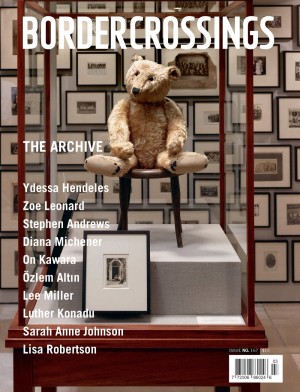Who Are the Passionate Canadians?
The C.B.C., Nancy Reilly and all the hard-working people involved in the recent television documentary, The Passionate Canadians, must be congratulated for having the dedication necessary to complete a herculean task. Tom Thomson’s mysterious death has been verbally re-enacted and re-directed in many discussions since that fated summer of 1917; and I am sure that the difficulties in reconstructing the diverse activities of infamous painters are enough to make any film-maker paint his own lense. But, after a great deal of research and a number of disappointments, the film was produced and aired on October 26th and November 2nd.
The two part film is an effort to depict salient aspects of the Group of Seven between 1910 and 1930. Recognizing that the inception of the organization occurred well before their official naming in 1920, the producer directed the first segment towards the painters’ early contacts and Tom Thomson. For instance, we were treated to a well-done set in which Thomson teaches padelling in the office of the Grip Design Company. Unfortunately other important events in the Seven’s history, such as Harris’ and MacDonald’s visit to the Scandinavian Show in Buffalo were only verbally described. Much—perhaps too much—of the segment was devoted to Thomson. The second section, that dealing with the 1920’s, indicated the breadth of their perambulations and the development of their fame.
A variety of methods were used to portray these activities. To create a personal, immediate atmosphere, Harry Adaskin, a musician and long-time friend of the Seven, narrated the show, adding his own theories and thoughts. Adaskin was charming and most convincing, comments that do not hold for inexperienced actors. The actors dramatized portions using at times the actual location, such as the Arts and Letters Club in Toronto. Unfortunately the dialogue, taken from the Seven’s letters, often appeared contrived. The message certainly suffered in the change of media. Finally the film was knit together and rendered compatible with the Seven’s environment by cinematographer Ken Gregg, an erstwhile Winnipegger. Gregg captured many of the places painted by the Seven, and presented them to us in the 1970’s media of film, dressed in all the varied finery provided by our intemperate climate. Gregg was unquestionably the show stealer, leading us gently through Group of Seven territory from the atmospheric mists of Algonquin Park to the ice fields of the Rockies.

Scene from The Passionate Canadians: The Group of Seven. Photo courtesy of CBC Television.
Reilly’s script tended to emphasize activities rather than paintings. Certainly it’s a most difficult task to represent a static painting on an active television show. As movement is central to film, paintings usually suffer. In this case, the producers were further frustrated by having to use reproductions of many major paintings rather than the originals. The result is a show centred on the creators rather than on their product.
And that is probably as precise as one can get in identifying the central core or focus of the show. Reilly spent over two years in tackling the almost insoluble problem of how to do justice to national heroes. Perhaps she tried too hard; perhaps she tried to cover too much and please too many, for, what emerges, is a show with two conflicting and mutually exclusive points of view.
The dominant point of view is expressed by Harry Adaskin. He contends, as do many of the Seven, that they were greatly maligned, their work ridiculed or hated. If we are to believe tradition, everyone thought of their paintings as “a single, narrow, rigid formula of ugliness”. This point of view is represented by rotund, lame Hector Charlesworth, the editor of Saturday Night and the symbol of a conservative, unappreciative public.
In contrast, the bulk of the Passionate Canadians is thoroughly researched and presented with a careful attention to authenticity. Furthermore, research has shown conclusively that the Seven were not widely disliked, that reviewers seldom reverted to “hot mush” sobriquets, and that Hector Charlesworth was the exception, not the rule. No less an authority than Peter Mellen, consultant to the show, makes it abundantly clear in his book, The Group of Seven, that the rejection theory is nothing more than a popular myth. The contradiction is never resolved. Perhaps both the perpetuators and the originators of this myth are Passionate Canadians.
Ann Davis, who wrote her Ph.D. on the Group of Seven, is the curator of Canadian art at the Winnipeg Art Gallery. A frequent contributor to Canadian art and intellectual magazines, she is currently preparing a retrospective exhibition on the work of Lionel Lemoine Fitzgerald.

